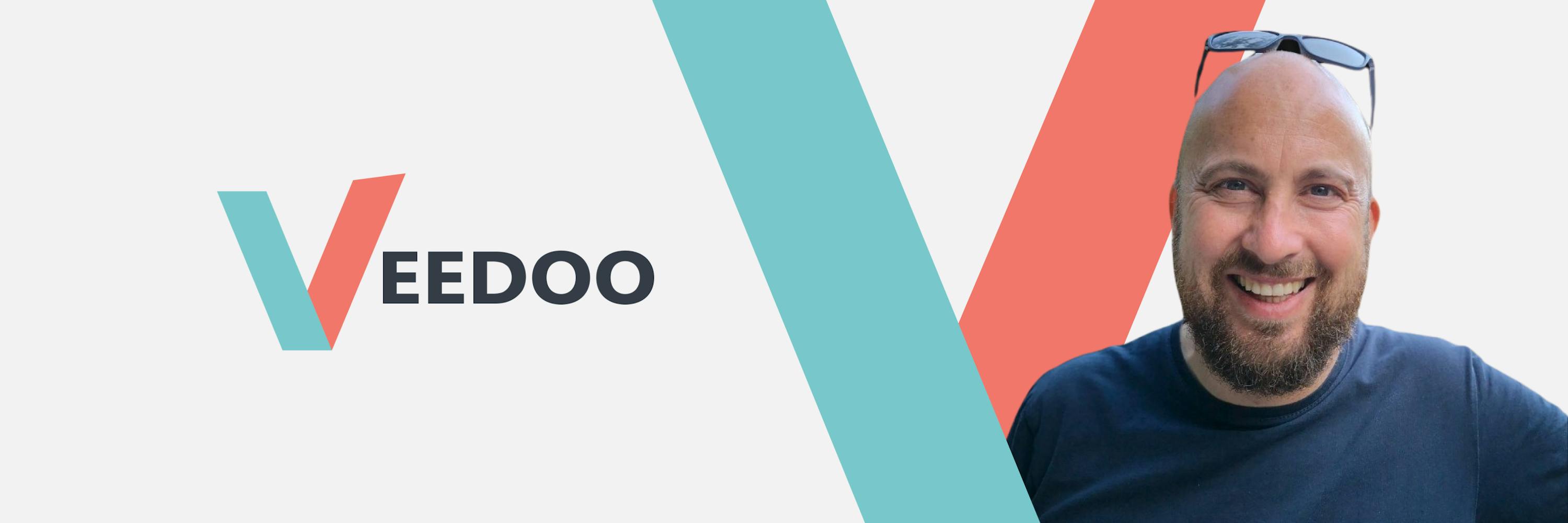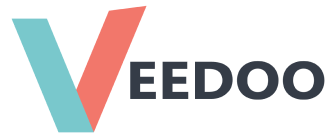
PRO Idei. Top Marketing News and digital agency Veedoo
Why do non-profit organisations, foundations, and chambers, need to have a professional website in 2024, and how does it affect the effectiveness of disseminating the organisation's mission and attracting funding?
PRO Idei. Top Marketing News spoke with Ian Bearder, founder and CEO of the digital agency Veedoo, specialising in website development, applications, and software for leading multilingual informational and media platforms, membership organisations, international and European projects, programmes, and government institutions.
Is having a website a necessity for non-profit organisations, funds, and various EU projects in 2024?
Yes, it’s essential. With the increasing reliance on digital platforms for information, communication, and engagement, a well-designed and user-friendly website is a crucial tool for non-profit organisations to reach their target audience. In fact, we estimate that a project’s online presence will facilitate about 90% of interactions with donors and foreign and domestic partners.
Apps such as Twitter and Facebook and LinkedIn have grown in popularity, and they are useful but each has a specific niche or focus. So, a well designed website is still the go-to place for visitors and stakeholders looking for information, making it the perfect place to share your mission and impact, and facilitate donations and volunteer engagement.
Is it true that non-profit organisations, funds, EU projects, and chambers need special professional websites that are very different from regular informational websites?
Yes, because all successful websites will present information in a way that’s both clear and easy to find. NGOs and membership organisations need to think of the users who will visit their website and what information they will be looking for.
If the primary audience is donors looking for project updates, you should include this information on the homepage. If the primary audience is project partners looking for information about meetings or events then prioritise this information.
Thinking of these ‘user stories’ helps to plan the structure of the site.
If you work with an agency like Veedoo, you will benefit from many years experience in designing websites for NGOs, EU projects or membership organisations.
How is the process of creating a "turnkey" website for non-profit organisations usually conducted?
A good agency will always start by gathering information and requirements from the client. We usually do this with the help of questionnaires and face to face interviews.
This is important because we need to understand the goals of the website, but also the history of the organisation. It’s important to know what information, skills and resources are available within the project team. For example, if many team members have experience using a specific content management system (CMS), such as WordPress then we might choose to use the same technology so users don’t need additional training.
In these early stages, before we do any development, we also try to establish some clear roles and responsibilities and explain the relationship between different roles. We do this to avoid delays caused because content or translations are not available, or because work started too late.
Once we have the requirements, we will design and develop and deploy the site, working closely with the client to make sure they are happy with the results.
Undoubtedly, digital transformation helps non-profit organisations realise their potential and attract new users and partners. What should an effective website look like in 2024?
Firstly it's important to cover the basic things well. I mean, your site should work seamlessly on large and small screens and mobile devices. It should be fast and it should have been configured with solid search engine optimisations.
If you have a lot of information or need to interact with the site visitors, chatbots are now very popular and of course everyone is talking about AI, so if you have data to share or organise - it might be possible to use AI to bring your website to life. You should discuss all these things with your developer to understand a) what they can do and b) they are included in the project proposal.
Also, don’t neglect the backend (the software used to manage your website). If this is badly configured or out of date, it will make it harder to manage the site. This might delay important updates or users might decide not to publish new articles because it takes too much time.
For this reason, we tend to use popular content management systems like WordPress or platforms like Prismic which have a really clean and easy to use interface.
Finally, wherever possible it should integrate with the other systems and data you have in your organisation. If it’s possible to automate things like publishing events and articles, or process membership requests via the website, then site visitors will be happy and you will have less work to worry about.
Oh, and don’t forget to set-up Google Analytics or a GDPR compliant tracking solution. You’ll need this data to report on the success of your site.
What can you say about the requirements for multilingual websites for non-profit organisations, EU projects, and international projects in Ukraine?
Never underestimate the complexities of managing multiple languages. Even small websites can be difficult to maintain once you add a second language.
If you decide to publish in two or more languages, you should be sure that you have the resources to translate everything (every site update) throughout the life of the website. Also, consider the impact your second language will have on the design of the site. For example, if you have a button or title in English, it might take up much more space in Ukrainian. If you need an Arabic version of the site, it will read from right-to-left and this will also impact the design.
An experienced designer will be able to recommend the best solution for these issues, so it is a good idea to work with an agency who is used to building and managing multilingual sites/solutions.
What can you say about the requirements for multilingual websites for non-profit organisations, EU projects, and international projects in Ukraine?
Never underestimate the complexities of managing multiple languages. Even small websites can be difficult to maintain once you add a second language.
If you decide to publish in two or more languages, you should be sure that you have the resources to translate everything (every site update) throughout the life of the website. Also, consider the impact your second language will have on the design of the site. For example, if you have a button or title in English, it might take up much more space in Ukrainian. If you need an Arabic version of the site, it will read from right-to-left and this will also impact the design.
An experienced designer will be able to recommend the best solution for these issues, so it is a good idea to work with an agency who is used to building and managing multilingual sites/solutions.
Is it true that the EU has its standards - accessibility and usability, as well as EU Design Standards for non-profit organisations?
Yes, it's true that the EU has standards related to accessibility and usability for websites and digital services. The Web Accessibility Directive outlines requirements for the accessibility of the websites and mobile applications of public sector bodies, aiming to ensure that everyone, including people with disabilities, can access and use online information and services.
In addition, the EU has guidelines and standards for design and usability aimed at ensuring that digital services provided by public sector organisations are user-friendly and accessible. These standards are in line with the principles of inclusive design, emphasising the importance of considering diverse user needs and promoting accessibility for all.
How do you recommend approaching the communication strategy and audience engagement through the website for such organisations?
A well designed website should support most of your communications and dissemination activities. For example you can sign people up to your newsletter, promote events and share reports etc.
However, try to think of these things before you develop the site and ask your developers how they can facilitate your communications tasks or even automate them. If blog posts can be automatically collected and published via your social media channels and your newsletter, this will save you a lot of work.
What are the main steps you recommend in planning and developing a website for EU projects, funds, and NPOs?
A good developer will walk you through the development process, so I will mention a few important areas that people often overlook.
The first is compliance with EU Standards. Ensure that your website adheres to the relevant EU standards and guidelines, such as accessibility requirements and data protection regulations, to guarantee inclusivity and legal compliance.
Secondly, plan for multilingual Support. Given the multilingual nature of the EU, consider integrating multilingual support to ensure that the website can effectively communicate with audiences across different member states.
Next, decide if you need any donation or fundraising features. You’ll need to make sure these work with your bank and make sure they are secure.
Data Security and Privacy. This one is important because robust data security measures and compliance with EU data protection regulations are essential to protect user data and privacy.
Conduct proper testing and get user feedback. Thoroughly test the website for functionality, performance, and compatibility before you launch it and where possible gather feedback from stakeholders and potential users to make improvements.
And finally, plan and budget for proper training and maintenance.
Make sure your staff are trained to use and maintain your site. The last thing you want is an outdated or terrible looking homepage because the person updating it didn’t have the skills to do it properly. Likewise, you should budget for regular software and security upgrades so the site is always up-to-date and secure.
Budget for these things in advance. Don’t wait until you have a problem or your website is offline with nobody available to help.
How do you see the future development of websites for such clients, considering technological progress and changes in consumer behaviour?
AI will probably have the biggest impact because it’s rapidly changing many online systems and services.
New AI tools will rapidly decrease the time it takes to generate mockups and site designs and even help developers write better code.
However, while AI will eventually simplify much of the work described above, in the short term I think website development will be even more complicated because users will start to expect more advanced features and easier access to the data you have. Developers will need to find ways to provide these features while complying with existing GDPR rules and the EU’s new AI directive.
And finally, why did your digital agency Veedoo choose this niche?
Video’s mission statement is “to develop high-end online software and content to help our clients have a positive impact on society”. This comes from a long held belief that by supporting socially significant initiatives and using modern technologies, we bring a better future for society.












